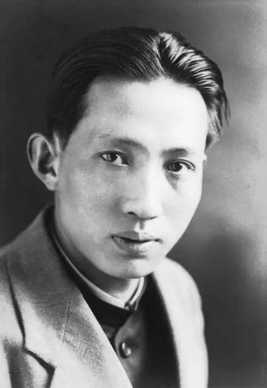Fu Baoshi
Fu Baoshi (October 5, 1904- September 29, 1965) was born in Nanchang, Jiangxi Province, with ancestral roots in Zhangtang Village, Beigang Township, Xinyu City, Jiangxi Province. His original name was Changsheng, his given name was Zhongzhou, his courtesy name was Qingyuan, his scientific name was Ruilin, and his given name was Baoshi Zhai Zhu. The name "Baoshi" comes from the Qing Dynasty painter Shi Tao. Chinese painter, art historian, calligrapher, art educator of modern and contemporary times, and representative painter of "New Landscape Painting".
His main paintings include "Qu Yuan", "The Country is So Beautiful", "The Coal City is Spectacular", "Forest Sea and Snow Plain", "Tianchi Forest Sea", "Mirror Mooring Flying Spring", etc. [1-2]
In 1932, under the recommendation of Xu Beihong, he studied in Japan and studied Eastern aesthetics and art history under the guidance of Shogo Kanehara. In 1935, he returned to China and taught at Nanjing Central University, teaching Chinese art history. After the rise of the Anti Japanese War, he assisted Guo Moruo in promoting anti Japanese literature and art. In 1939, he lived at the foot of Jingang Slope in the western suburbs of Chongqing and taught at Central University and the National Academy of Arts. In 1946, he returned to Nanjing with the Central University. In June 1951, he was elected as a member of the Joint Standing Committee of the Literary and Art Circles in Nanjing; In September 1953, the works "Crossing the Dadu River" and "Enjoying the Thousand Miles of Snow in Minshan Mountain" were exhibited at the "First National Chinese Painting Exhibition"; In May 1954, elected as a director of the East China Artists Association; In September, elected as a joint committee member of the literary and artistic circles in Jiangsu Province; In April 1955, he was elected as a member of the First Jiangsu Provincial Committee of the Chinese People's Political Consultative Conference; In March 1960, he was appointed as the president of Jiangsu Academy of Chinese Painting. In April, he was elected as the chairman of the Jiangsu branch of the China Artists Association and the vice chairman of the Jiangsu Calligraphy and Seal Research Association. In August, he was elected as the vice chairman of the China Artists Association; In October 1964, the work "The Dragon's Grasping Over the Past" was exhibited in the "National Art Exhibition East China Works Exhibition", and was also elected as the vice president of Xiling Seal Engravers Society. In December, he was elected as the representative of the Third National People's Congress of the People's Republic of China; On September 29, 1965, he passed away in Nanjing, Jiangsu at the age of 62.

 中文
中文  en
en 
